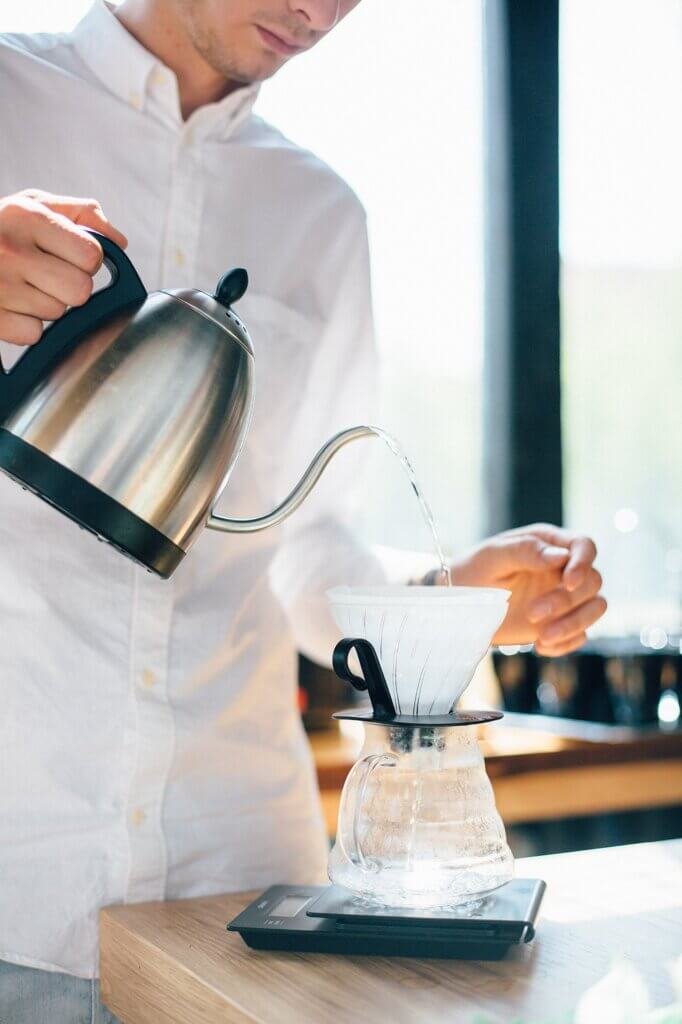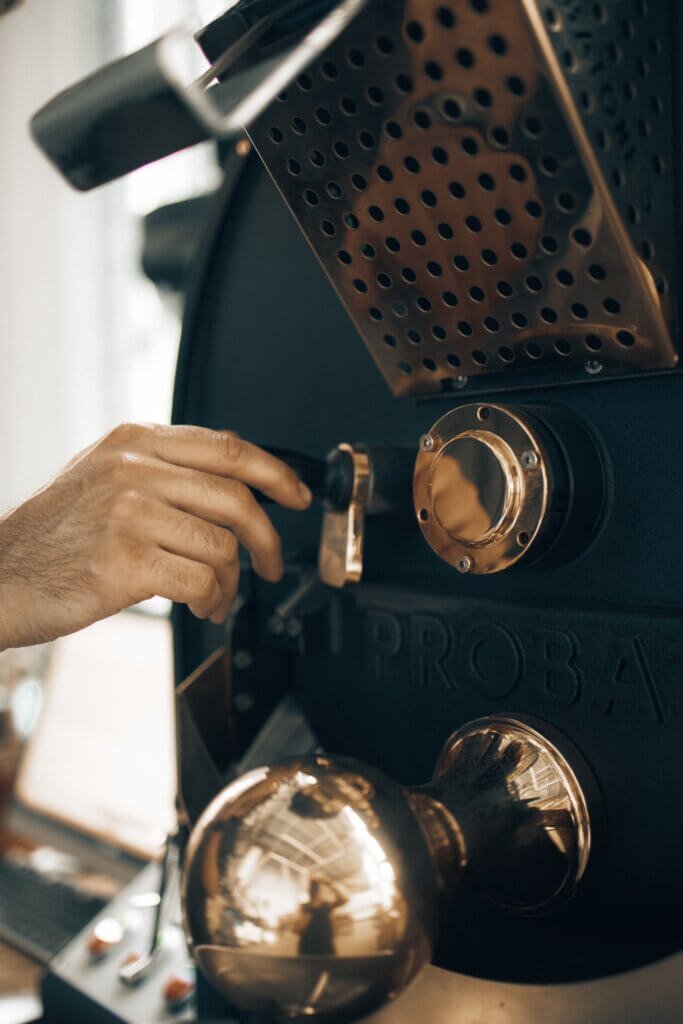Are you tired of inconsistent or lackluster milk foam in your coffee? Look no further, as we have the perfect guide to help you master the art of proper milk steaming and frothing. In this article, you will discover the essential techniques and tips that will elevate your coffee experience to the next level. From achieving the ideal temperature and texture to creating beautiful latte art, you will soon be savoring café-quality drinks from the comfort of your own home. Get ready to impress your friends and family with your newfound milk steaming skills!

Why Proper Milk Steaming and Frothing is Important
When you walk into a coffee shop and order your favorite latte or cappuccino, you may not realize the amount of skill and technique that goes into creating that perfectly steamed and frothed milk. Proper milk steaming and frothing is a crucial part of the coffee-making process, and it can greatly enhance your coffee-drinking experience. From achieving the perfect texture to enhancing the flavor and even creating beautiful latte art, understanding and mastering the art of milk steaming and frothing is essential for any aspiring barista or coffee lover.
Achieving the Perfect Texture
One of the key reasons why proper milk steaming and frothing is important is to achieve that desired silky-smooth texture in your milk. Whether you prefer a creamy latte or a foamy cappuccino, the texture of the milk can make or break your coffee. Steaming milk properly helps to incorporate air into the milk, creating that velvety texture that adds richness to your drink. With the right technique, you can achieve microfoam, which is dense and uniform in texture, making your coffee even more enjoyable.
Enhancing the Flavor
Properly steaming and frothing milk can also have a significant impact on the flavor of your coffee. When milk is steamed correctly, it becomes sweeter and creamier, complementing the flavors of the coffee. The process of steaming milk also helps to break down some of the sugars in the milk, resulting in a more balanced and rounded taste. By taking the time to perfect your milk steaming technique, you can elevate the flavor of your coffee to a whole new level.
Creating Latte Art
If you enjoy the creative side of coffee-making, then mastering the art of milk steaming and frothing is essential for creating latte art. Latte art has become a popular form of artistic expression in the coffee world, with baristas worldwide showcasing their skills through beautiful designs and patterns formed with steamed milk. By understanding the different techniques involved in steaming and frothing milk, you can tap into your creativity and start creating your own latte art masterpieces.
Understanding Different Types of Milk
Before diving deeper into the art of milk steaming and frothing, it’s important to have a basic understanding of the different types of milk commonly used in coffee beverages. Here are a few popular choices:
Whole Milk
Whole milk is the most traditional choice when it comes to coffee beverages. It offers a rich and creamy texture, which makes it perfect for lattes and cappuccinos. The higher fat content in whole milk contributes to a fuller mouthfeel and adds a touch of indulgence to your coffee.
Skim Milk
Skim milk, also known as non-fat milk, is the polar opposite of whole milk in terms of its fat content. It has been stripped of most of its fat, resulting in a thinner texture. Skim milk is popular among those seeking a lighter coffee option with fewer calories. While it may not provide the same creamy mouthfeel as whole milk, it can still be steamed and frothed to a decent texture.
Soy Milk
For those who are lactose intolerant or follow a plant-based diet, soy milk provides an excellent alternative. Soy milk has a similar consistency to whole milk and can be steamed and frothed beautifully. It offers a slightly nutty flavor that can complement various coffee profiles.
Almond Milk
Almond milk has gained popularity in recent years, particularly among those with dairy allergies or looking for a dairy-free option. It offers a subtle nutty flavor and a light texture, making it a versatile choice for milk-based coffee drinks. Almond milk can be a bit tricky to steam and froth due to its low protein content, but with practice, you can achieve satisfactory results.

Choosing the Right Milk Pitcher
Now that you have a better understanding of the different types of milk, it’s time to focus on choosing the right milk pitcher. The milk pitcher, also known as a frothing pitcher, plays a crucial role in achieving the desired texture and consistency of your steamed and frothed milk.
Size and Shape
The size and shape of the milk pitcher can greatly influence your milk steaming and frothing experience. A general rule of thumb is to choose a pitcher that is large enough to hold the amount of milk you plan to steam, leaving enough room for the milk to expand. However, a pitcher that is too large may make it challenging to achieve the desired level of foam and texture. Additionally, consider the shape of the pitcher, as a tapered spout can provide better control when pouring latte art.
Material
Milk pitchers are commonly made from stainless steel or glass. Stainless steel pitchers are the preferred choice due to their durability, heat retention properties, and ease of cleaning. They also tend to distribute heat more evenly, ensuring consistent results. However, glass pitchers can be a stylish alternative and allow you to visually monitor the milk as it steams and froths.
Mastering the Steaming Technique
Once you have the right milk pitcher at hand, it’s time to focus on mastering the steaming technique. Properly steaming milk involves a series of steps and techniques that, when executed correctly, will yield the ideal texture and temperature for your coffee beverages.
Pre-Steaming Preparation
Before you begin steaming, ensure that your milk is properly chilled, as using cold milk helps to create better foam. Fill your milk pitcher with just enough milk for the drink you are preparing to avoid wasting any milk. Give the pitcher a gentle tap on the counter to eliminate any large bubbles or pockets of air.
Positioning the Steam Wand
Positioning the steam wand correctly is crucial to achieving the desired texture. Submerge the wand just below the surface of the milk while keeping the tip slightly off-center. This position allows for proper aeration and ensures the creation of microfoam. As the milk begins to heat, gradually lower the pitcher, keeping the wand near the surface to continue incorporating air.
Creating the Right Amount of Steam
The amount of steam you introduce to the milk will determine its texture. To create microfoam, which is ideal for latte art and a velvety mouthfeel, you need to control the amount of steam. Start by fully opening the steam valve to purge any water that may have collected in the wand. Then, partially close the valve to slow down the steam flow, allowing the milk to heat gradually and develop the microfoam.

Achieving Proper Milk Temperature
Proper milk temperature is another essential factor in the milk steaming process. Different coffee drinks require specific temperature ranges to optimize their flavors and textures. Achieving the right milk temperature takes practice, but with the help of a thermometer and careful monitoring, you can reach perfection.
The Ideal Temperature Range
For most coffee beverages, the ideal milk temperature ranges between 150°F (65°C) and 155°F (68°C). This temperature ensures that the milk is hot enough to blend harmoniously with the coffee but not too hot that it scalds the milk or alters its flavor. However, it’s important to note that individual preferences may vary, so don’t be afraid to experiment and find the temperature that suits your taste.
Using a Thermometer
To accurately measure the temperature of the milk, it’s highly recommended to use a thermometer. There are various types of thermometers available, including digital and analog options. Choose one with a long probe that can reach deep into the milk without touching the bottom of the pitcher, as this may affect the reading. Insert the thermometer into the milk and monitor the temperature as it rises, removing it from the milk once it reaches the desired range.
Monitoring and Adjusting
As you gain experience in milk steaming, you will become more familiar with the timing required to reach the ideal temperature. It’s important to continuously monitor the milk’s temperature while steaming, as it can rise quickly. If the milk reaches the desired temperature before you have achieved the desired texture, you can adjust the steam flow and wand position accordingly to continue achieving the perfect milk texture.
Developing Proper Steaming and Frothing Practices
To become proficient in milk steaming and frothing, it’s essential to develop proper practices through practice and experimentation. Here are a few key steps to get you started on your journey to becoming a master barista:
Practicing with Water
If you’re new to milk steaming and frothing, it can be helpful to practice with water first. This allows you to familiarize yourself with the steam wand, understand its power, and get a feel for how it affects the liquid. Fill your milk pitcher with water and practice positioning the steam wand, controlling the steam flow, and creating various foam textures. This practice will help you build the muscle memory needed for achieving consistent results.
Identifying Different Steaming and Frothing Styles
As you gain more confidence and experience, you can start exploring different steaming and frothing styles. Each coffee shop or barista may have their preferred style, which can vary from creating a thick, marshmallow-like foam for cappuccinos to silky microfoam for latte art. Experiment with different techniques and foam densities to find the style that best suits your preferences and the beverages you want to create.

Common Mistakes and Troubleshooting
Even the most skilled baristas can make mistakes in the milk steaming and frothing process. Here are a few common mistakes and tips to troubleshoot them:
Overheating the Milk
One of the most common mistakes is overheating the milk, which can result in a burnt or unpleasant taste. To avoid this, always monitor the temperature with a thermometer and remove the steam wand once the milk reaches the ideal range. Additionally, be mindful of the steam flow and wand positioning to prevent excessively heating the milk.
Creating Large Bubbles
Large bubbles in your milk can disrupt the texture and make it difficult to achieve the desired consistency. To prevent large bubbles, ensure that your milk pitcher is free of any residual soap or residue that may contribute to bubbles. Tap the pitcher gently on the counter to release any trapped air. Position the steam wand properly and gradually introduce steam to the milk to avoid large bubbles from forming.
Not Properly Purging the Steam Wand
Proper purging of the steam wand ensures that only dry steam is introduced into the milk, preventing any unwanted water or milk residue from contaminating the final product. Always start by purging the steam wand to remove any excess water before steaming the milk. This ensures a clean and pure stream of steam, resulting in better texture and flavor.
Tools for Mastering the Process
To truly master the art of milk steaming and frothing, certain tools are essential for consistent results and a smooth workflow. Here are a few must-have tools:
Steam Wand
A high-quality steam wand is the heart of any milk steaming setup. Look for a wand that offers precise control and is capable of producing enough steam to create the desired texture. Different espresso machines may have different types of steam wands, so familiarize yourself with your specific machine and its capabilities.
Thermometer
As mentioned earlier, a reliable thermometer is crucial for achieving the perfect milk temperature. Invest in a thermometer that provides accurate readings and is easy to read, ensuring that you hit the sweet spot every time.
Milk Steaming Pitcher
Choose a milk pitcher that suits your needs in terms of size, shape, and material. Stainless steel pitchers are the most popular choice due to their durability and heat retention properties. Ensure that the pitcher has a comfortable handle and a well-designed spout for easy pouring.
Towel
Having a clean, lint-free towel at hand is essential for keeping your milk pitcher and steam wand clean and dry. Use the towel to wipe down the pitcher after each use and to purge any residual moisture from the steam wand.

Achieving Latte Art
For some, the true beauty of milk steaming and frothing lies in the creation of latte art. While it may seem intimidating at first, with practice and patience, you can start pouring your own latte art designs. Here’s how to get started:
Pouring Techniques
The key to creating latte art lies in mastering different pouring techniques. Start by mastering the basic pour, which involves pouring the milk evenly into the center of the cup to create a solid base. Once you’ve mastered this technique, you can move on to more advanced pouring techniques, such as the heart, tulip, and rosetta. Each design requires precise movement and control of the milk pitcher, so don’t be discouraged if it takes a few attempts to get it just right.
Creating Basic Designs
To start with, focus on creating basic designs such as hearts or simple tulips. Begin by pouring the milk into the center of the cup with a steady hand, gradually moving the pitcher back and forth to create the desired pattern. As you improve, you can experiment with different pouring speeds and angles to add flair and creativity to your designs.
Advancing to Latte Art Mastery
Achieving mastery in latte art requires dedication, practice, and a willingness to experiment. Study the works of renowned latte artists, explore online tutorials and resources, and seek inspiration from the coffee community. Gradually, with consistency and determination, you will be able to pour intricate designs and take your latte art to the next level.
Practice Makes Perfect
Lastly, remember that practice makes perfect when it comes to mastering the art of milk steaming and frothing. Experiment with different milk types, adjust your steaming techniques, and focus on consistency and patience. With each attempt, you will gain more confidence and refine your skills. Enjoy the process, savor the rewards of your efforts, and embrace the joy of creating exceptional coffee beverages for yourself and others.


